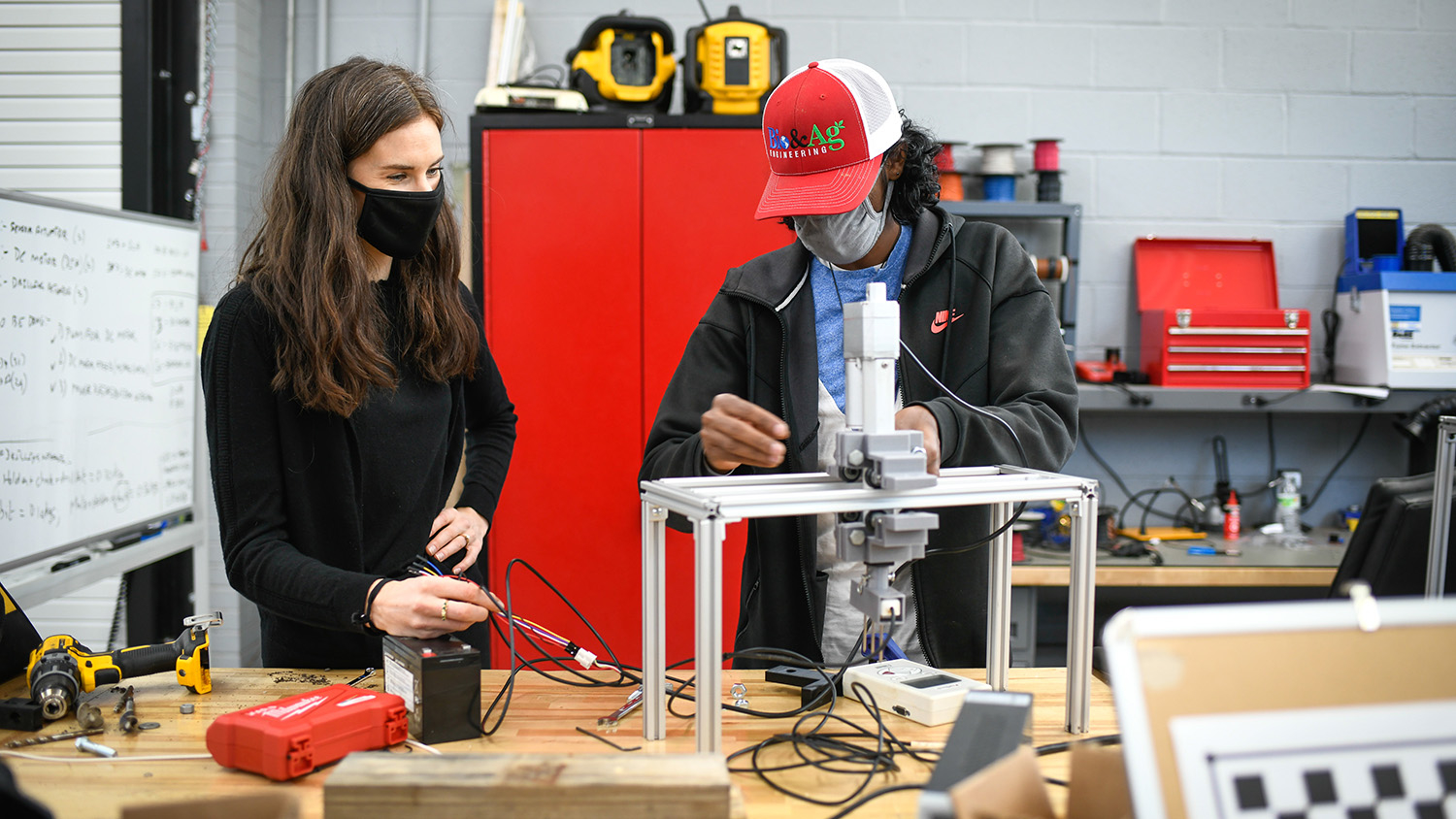Aquaculture is the world’s fastest-growing animal-protein production sector, and the use of robots in many industries is growing quickly, as well. At North Carolina State University, researchers are finding ways to build on these trends to increase marine aquaculture yields, ensure food safety and decrease the pressure to harvest wild seafood.
It’s a step that could help the state on its way to a proposed goal of growing shellfish farming into a $100-million-a-year industry by 2030.
The researchers plan to use small fleets of unmanned vehicles on the water and in the air to improve oyster production near the North Carolina coastline. The goal is to get the vehicles to work with each other to monitor water quality in areas that are difficult and dangerous for people to access.
Sierra Young, an assistant professor in the Department of Biological and Agricultural Engineering, is the project’s principal investigator. Collaborators include three other faculty members from BAE – Steven Hall, Natalie Nelson and Celso Castro-Bolinaga – as well as John-Paul Ore, from the Department of Computer Science.
Focus: Water Quality
The researchers say the project will provide valuable data to inform management decisions that are key to unlocking sustainable growth of nearshore production of shellfish in North Carolina and beyond.
The four-year project was funded this fall by a $1 million grant from the U.S. Department of Agriculture’s National Institute for Food and Agriculture through the multiagency National Robotics Initiative 2.0.
Young says that the team is focusing on water quality because it has important implications for the safety of consumers’ food and for producers’ profitability.
Bacteria and other pollutants carried by stormwater into the ocean can cause nearshore producers to halt their harvests temporarily, until the bacteria reach safe levels. These closures are estimated to cost producers 25% of their average annual income.
We hope to automate water testing and sample collection by creating a data-driven process that makes the (closure) window as small as it needs to be.
As Young explains, “We hope to automate water testing and sample collection by creating a data-driven process that makes the window (of closure) as small as it needs to be.”
Predicting Hotspots
The researchers plan to develop computer models that let them know which areas of an operation are most likely to become bacterial hotspots – places “where we can predict there might be higher levels of bacteria or other water-quality parameters of interest, such as dissolved oxygen or pH,” Young says.
Within those hotspots, the robots will use sensor probes to measure conditions, and they’ll take samples that can be returned for laboratory analysis.
The idea is to get the most value out of a single deployment.
“We’re looking to not just have robots that autonomously monitor the same area over and over,” Young says, “but we are integrating that water quality modeling with robot path planning to direct the robots to the most important and informative areas within a shellfish growing area.
“The idea is to get the most value out of a single deployment, especially when the number of water samples the robots can take is limited,” she says.
Getting Robots to Work Together
The researchers will also be looking at ways they can have unmanned surface vehicles (USVs) moving along the water communicate and work with unmanned aerial vehicles (UAVs), or drones. UAVs could, for example, be used to scout areas and let the USVs know where conditions might be unsafe to enter, and the USVs, or drone ships, could be used as landing and docking stations for the UAVs to expand the survey area.
The researchers plan to initially test their system in local lakes and ponds as well as at NC State and the university’s Marine Aquaculture Research Center in Carteret County. Full-scale testing will also occur in commercial oyster-growing areas.
Our long-term goal is to get this information – and ultimately these robotic tools – in the hands of growers.
“We’re designing our autonomous robot fleet to generate water quality data not only to inform management decisions in real-time but also to improve bacteria load forecasts and predictions,” Young says. “Our long-term goal is to get this information – and ultimately these robotic tools – in the hands of growers to help mitigate production and income loss due to shellfish mortality and unanticipated closures.”
This post was originally published in College of Agriculture and Life Sciences News.



